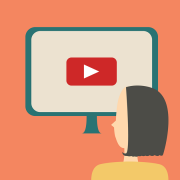The 3 Best Strategies To Do A Digital Detox
If you find yourself checking your phone every few minutes or you feel anxious when you aren’t able to check, these are sure signs you’re ready for a digital detox. Spending too much time on your devices can harm your mental and physical health. It can make you feel stressed, disrupt your sleep, and even cause headaches and eye strain.
A digital detox means taking a break from electronic gadgets to help you relax and live your life without distractions. When you cut down on screen time, you avoid the negative effects of digital addiction, such as constant distraction and less productivity. In this article, we will go over several strategies to help make the break.
1 – Start with a plan
Having a game plan will give you a road map so you can find your way to the end goal. And the goal should be clear. Think about whether you want a short detox that might last just a weekend or a longer one that could go on for several weeks. Pick a time when you won’t need your devices as much, like during a vacation or a slow period at work.
Let your friends, family, and coworkers know about your plans. This will help them understand why you might not be as reachable and will support you as you try to cut back on device use. To get ready for your detox, adjust the settings on your devices. Turn off notifications that aren’t necessary to reduce distractions.
If you spend a lot of time on social media, your personal data is likely all over the internet. Consider using an app like DeleteMe to clean up any trace of your social media presence that data brokers have paid for.
2 – Pull the plug
Once you’re ready to start your digital detox, focus on cutting down your screen time. Start by turning off all notifications that aren’t essential. Doing this can really help reduce the need to constantly check your phone. Set specific times for when you’ll check your devices, like once in the morning and once at night.
Take social media apps off your phone or use tools that block these sites to stop you from scrolling through updates. Use this extra time for activities you enjoy but might have put aside, such as reading, drawing, or playing music.
3 – Handle withdrawals
Cutting down on screen time can lead to withdrawal symptoms like feeling restless, irritable, or like you’re missing out. It’s normal to feel this way when you’re breaking a digital habit.
To deal with these feelings, try activities that calm you down and help you focus. Mindfulness or meditation can be really helpful. These practices keep you in the present and help lower your stress. Doing physical activities can also help. They keep your mind off screens and boost your mood and energy.
If staying away from devices is tough, set small, daily goals that you can achieve easily. This builds your confidence and helps you slowly reduce your screen time.
















